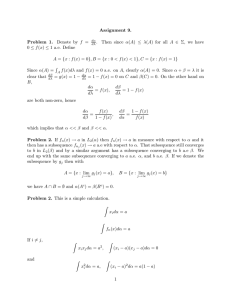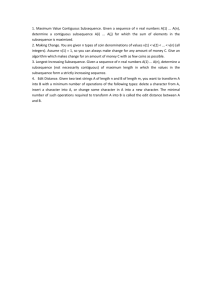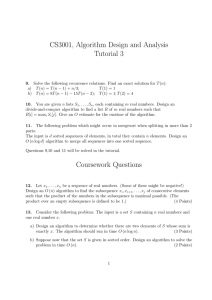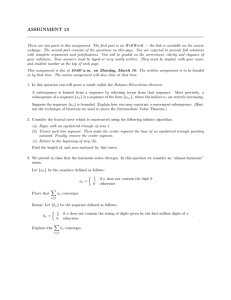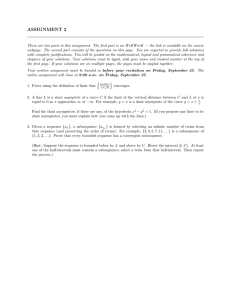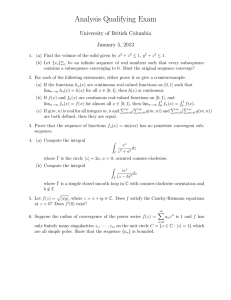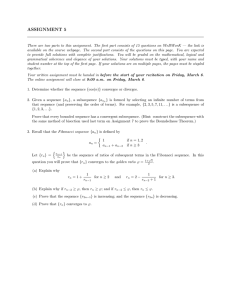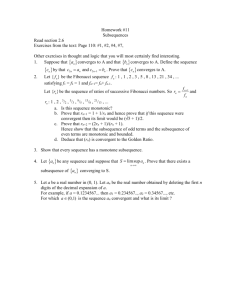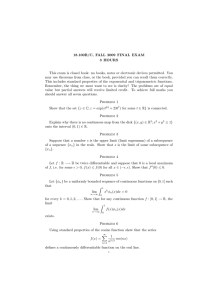Worksheet for Lab #3 Ex2: Subsequence
advertisement
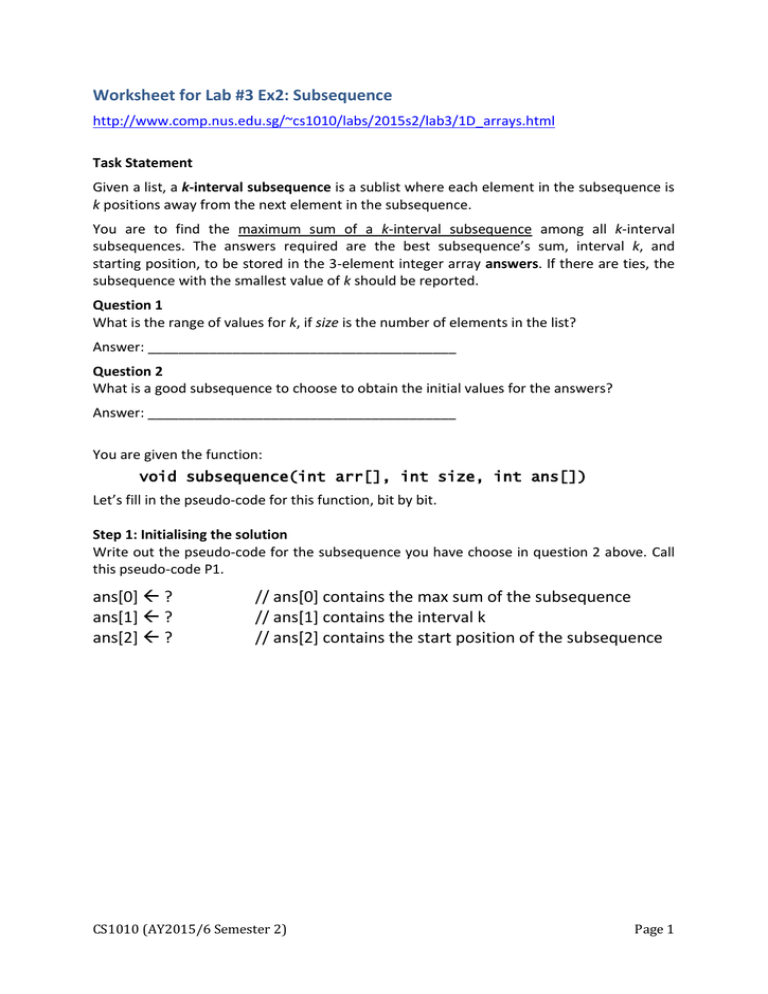
Worksheet for Lab #3 Ex2: Subsequence http://www.comp.nus.edu.sg/~cs1010/labs/2015s2/lab3/1D_arrays.html Task Statement Given a list, a k-interval subsequence is a sublist where each element in the subsequence is k positions away from the next element in the subsequence. You are to find the maximum sum of a k-interval subsequence among all k-interval subsequences. The answers required are the best subsequence’s sum, interval k, and starting position, to be stored in the 3-element integer array answers. If there are ties, the subsequence with the smallest value of k should be reported. Question 1 What is the range of values for k, if size is the number of elements in the list? Answer: ________________________________________ Question 2 What is a good subsequence to choose to obtain the initial values for the answers? Answer: ________________________________________ You are given the function: void subsequence(int arr[], int size, int ans[]) Let’s fill in the pseudo-code for this function, bit by bit. Step 1: Initialising the solution Write out the pseudo-code for the subsequence you have choose in question 2 above. Call this pseudo-code P1. ans[0] ? ans[1] ? ans[2] ? // ans[0] contains the max sum of the subsequence // ans[1] contains the interval k // ans[2] contains the start position of the subsequence CS1010 (AY2015/6 Semester 2) Page 1 Step 2: Sum of a k-interval subsequence Suppose you are given a particular value of k, how would you compute the sum of every kinterval subsequence in the list, and update the answers if necessary? Question 3 For a particular value of k, how many k-interval subsequences are there in a list of size elements? Answer: ________________________________________ Write out the pseudo-code to compute the sum of every k-interval subsequence (for a particular value of k) and update the answers if necessary. Call this pseudo-code P2. The above pseudo-code P2 examines all k-interval subsequences for a particular value of k. Write the pseudo-code below to include all k-interval subsequences for all values of k, except the value of k which is used in pseudo-code P1 to find the initial values for the answers. In the pseudo-code below, you may use P2 to substitute the whole pseudo-code P2. CS1010 (AY2015/6 Semester 2) Page 2
